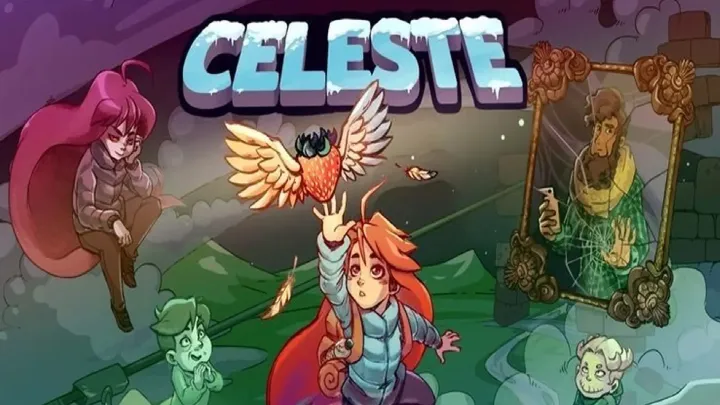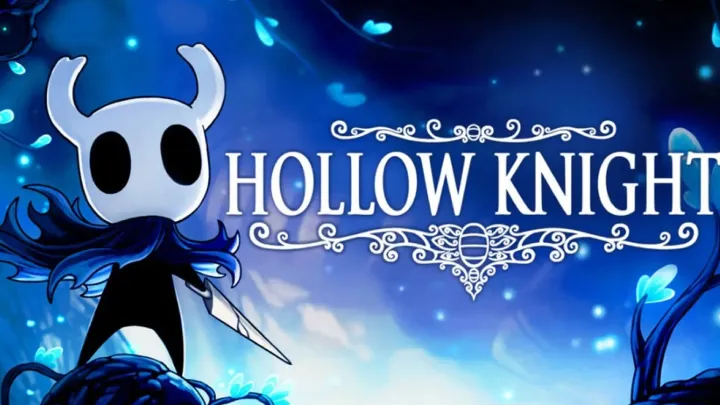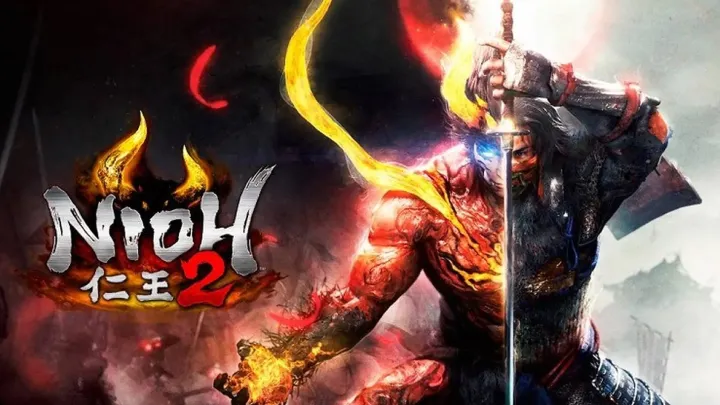Tsuki’s Odyssey is not your typical mobile game. It doesn’t ask you to win, compete, or climb leaderboards. Instead, it invites you to breathe. Created by HyperBeard, the same studio behind Tsuki Adventure, this sequel transforms passive gameplay into a meditative experience, blending cozy aesthetics with deep emotional storytelling.
Unlike most idle or life-simulation games, Tsuki’s Odyssey doesn’t focus on grinding or constant engagement. It’s about connection — to a small rabbit named Tsuki, to a world that feels alive even when you’re not playing, and to the emotions that arise from slowing down. This article dives deeply into one specific theme: how Tsuki’s Odyssey turns ordinary idleness into meaningful emotional storytelling, and how that design choice creates a quiet revolution in the world of mobile gaming.
1. The Philosophy of Slow Gaming
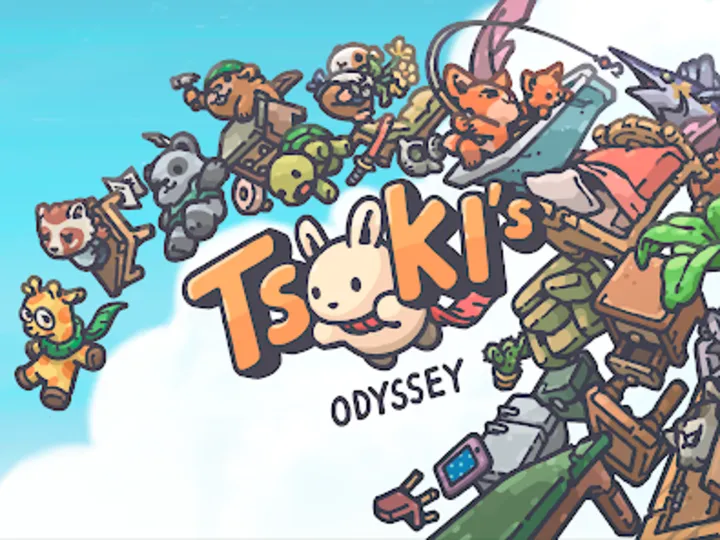
Tsuki’s Odyssey was built upon a concept rare in modern gaming — “slow gaming.” In a market filled with fast-paced mechanics and dopamine-charged feedback loops, Tsuki’s Odyssey chooses serenity. The game rewards time, patience, and mindfulness instead of quick reflexes.
This design philosophy invites players to observe rather than control. Tsuki, the rabbit, lives his life independently — fishing, journaling, or wandering through Mushroom Village — without your command. You become less a player and more an observer, a quiet witness to his days.
This break from constant interactivity is intentional. HyperBeard’s developers wanted to create a space that feels alive but unhurried, where you can check in at your own rhythm and still feel connected. The result is a game that encourages peace rather than productivity — a gentle rebellion against mobile gaming’s obsession with efficiency.
2. The Emotional Architecture of Tsuki’s World
The world of Tsuki’s Odyssey is deceptively simple. Mushroom Village, the primary setting, is small but rich with detail. Every corner holds a sense of purpose — a pond that ripples softly in the evening, a train station that hints at unseen journeys, and friends who appear when you least expect them.
What makes this world emotionally resonant is how it feels lived in. Unlike static backgrounds, Mushroom Village evolves subtly over time. Lighting changes, weather shifts, and Tsuki’s routines adapt to the hour of the day. It’s a living ecosystem designed to echo the feeling of quiet companionship.
When players open the game at night, they may find Tsuki writing by lamplight or sleeping peacefully. During the morning, he might be out in the garden. These small gestures build an emotional rhythm — one that mirrors real life, reminding players of the beauty found in ordinary routines.
3. Storytelling Without Words
In most games, stories unfold through quests or dialogue. In Tsuki’s Odyssey, stories emerge silently. The narrative breathes through atmosphere, animation, and timing. Tsuki’s facial expressions — a small smile, a sleepy blink, a wistful gaze — convey more emotion than any written text could.
This approach to storytelling transforms the mundane into the meaningful. Watching Tsuki drink tea with friends or stargaze alone invites introspection. Players project their own emotions onto him, creating a quiet empathy that feels deeply personal.
The absence of direct narrative structure allows players to fill in the gaps with imagination. It’s not about what happens to Tsuki, but what happens within the player while watching him. In this way, Tsuki’s Odyssey becomes not just a story — but a mirror.
4. The Power of Routine
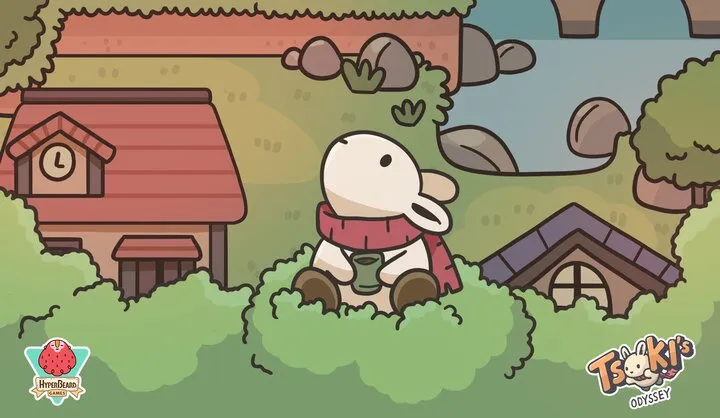
Tsuki’s Odyssey thrives on subtle repetition. You check in daily, watch Tsuki’s life unfold, maybe buy a few decorations for his home, then leave. Yet within this simple loop lies something profound — the comfort of routine.
Routine in Tsuki’s world is not monotonous; it’s therapeutic. It mimics the small rituals that bring comfort in real life — morning coffee, evening walks, the quiet pause before sleep. By participating in these digital rituals, players build emotional continuity with the game.
The design intentionally avoids rush. There are no urgent tasks or energy systems. You can’t force Tsuki to act faster or earn more carrots. Everything unfolds naturally, reminding players that some of life’s best moments can’t be hurried.
5. A World of Quiet Relationships
Tsuki’s relationships with other characters form the emotional heart of the game. Each friend — from Chi the fox to Moca the cow — carries a distinct personality that evolves through time.
Unlike conventional social simulation games, interactions aren’t transactional. You don’t build “friendship points” or unlock specific rewards. Instead, your relationships develop through observation. Sometimes, Tsuki visits friends spontaneously. Other times, they drop by unannounced.
These unpredictable moments create genuine surprise and warmth. It’s this unpredictability — this organic texture of friendship — that gives the game emotional realism. It mirrors how real-life relationships work: naturally, without schedules or conditions.
6. Environmental Storytelling and Aesthetic Design
The art direction of Tsuki’s Odyssey is one of its strongest emotional instruments. Every line, color, and sound contributes to a holistic mood — soft, earthy, and nostalgic.
The Visual Language
The hand-drawn art style evokes simplicity and innocence. Warm tones dominate the palette: golden sunlight, muted greens, and gentle blues. Each environment feels like a watercolor painting — imperfect, yet profoundly human.
The Soundscape
The sound design deepens the sense of stillness. There’s no epic soundtrack, only soft ambient melodies: rustling leaves, chirping crickets, the gentle hum of evening wind. These sounds create a subtle sense of presence, as if you’re right there beside Tsuki, sharing the silence.
Together, the visuals and audio form what could be called “emotional minimalism.” The fewer elements there are, the more weight each one carries. It’s not about stimulation — it’s about resonance.
7. Loneliness, Comfort, and Connection
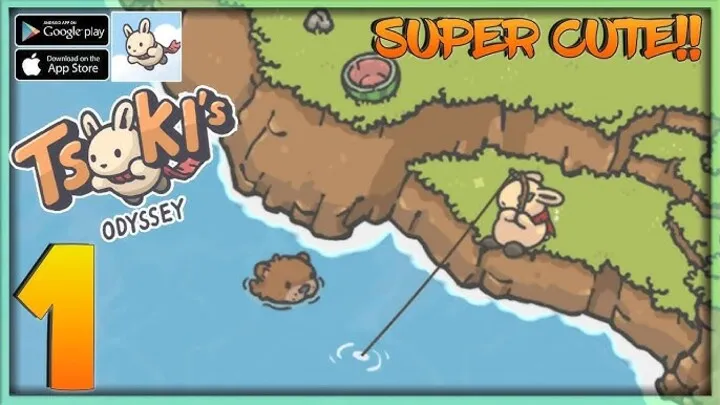
One of the most remarkable aspects of Tsuki’s Odyssey is how it portrays loneliness not as sadness, but as beauty. Tsuki spends much of his time alone — fishing, gazing at the sky, or simply sitting under a tree. But these moments don’t feel empty. They feel full.
The game gently reframes solitude as self-reflection. Tsuki’s solitude invites players to appreciate being alone without feeling lonely. For many, it becomes a safe space for quiet thought — an emotional pause in the noise of daily life.
At the same time, when friends do appear — when Moca shares a coffee or Yori stops by — those moments carry emotional weight. In contrast to isolation, they feel precious, reminding players that connection gains meaning precisely because it’s not constant.
8. The Philosophy of Ownership and Progress
Modern mobile games often equate ownership with achievement: collect items, earn currency, upgrade. Tsuki’s Odyssey subverts this formula. Here, buying items or decorating Tsuki’s house is not about status but expression.
The carrot currency system feels symbolic — carrots are not wealth, but experience. You earn them through Tsuki’s peaceful activities, and you spend them on objects that shape his environment. Each item — a lantern, a potted plant, a painting — carries aesthetic and emotional value.
Progress, in this sense, is personal. Your version of Mushroom Village becomes a reflection of your own taste and mood. Some players fill Tsuki’s home with cozy furniture; others leave it minimalist. There’s no wrong approach — only expression.
9. Time, Presence, and the Real World
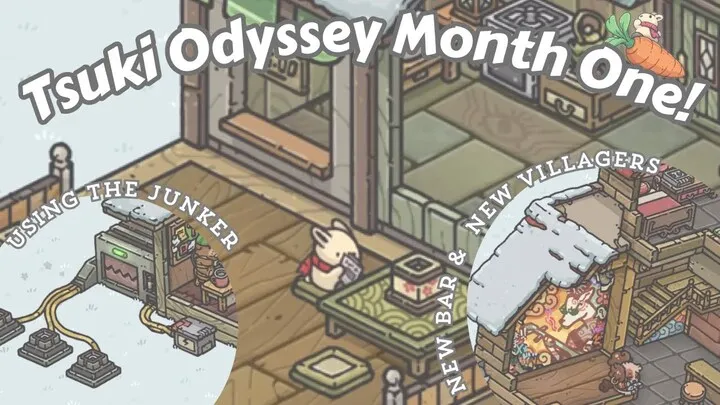
Perhaps the most profound design choice in Tsuki’s Odyssey is its integration with real-world time. The game continues even when you’re away. Tsuki eats, sleeps, explores — life goes on without you.
This mechanic serves a powerful metaphor: life, too, continues while we’re distracted. When you return, you’re not “catching up” — you’re rejoining a flow that never stopped. It subtly reminds players to be present, to appreciate time’s passage rather than fight it.
This gentle mechanic fosters emotional maturity in gaming. Instead of manipulating time (as in most idle games), Tsuki’s Odyssey teaches acceptance. You can’t control everything — and that’s okay.
10. The Legacy of Tsuki’s Odyssey and the Rise of Cozy Games
Tsuki’s Odyssey has become a cornerstone in the growing genre of cozy and emotional games. It demonstrated that a game doesn’t need fast progression, social pressure, or endless rewards to be engaging. It just needs heart.
This philosophy has inspired a wave of similar titles — games that value peace over productivity, such as Spiritfarer, A Short Hike, and My Oasis. Yet, Tsuki’s Odyssey stands apart because of its authentic stillness. It doesn’t ask you to do anything extraordinary — it asks you to be there.
The game’s legacy lies in its quiet courage. In a world obsessed with progress, it reminds us that presence is progress. That sometimes, watching a little rabbit sip tea beneath a full moon can teach more about life than any leaderboard ever could.
Conclusion
Tsuki’s Odyssey is a gentle masterpiece — a rare game that understands the emotional power of stillness. Through minimalist design, slow storytelling, and genuine connection, it turns idleness into reflection. It challenges our assumptions about what games should be and offers something far more profound: peace.
At its heart, Tsuki’s Odyssey isn’t just a story about a rabbit living in a village. It’s a story about us — about slowing down, embracing simplicity, and rediscovering joy in the ordinary moments we often overlook.













